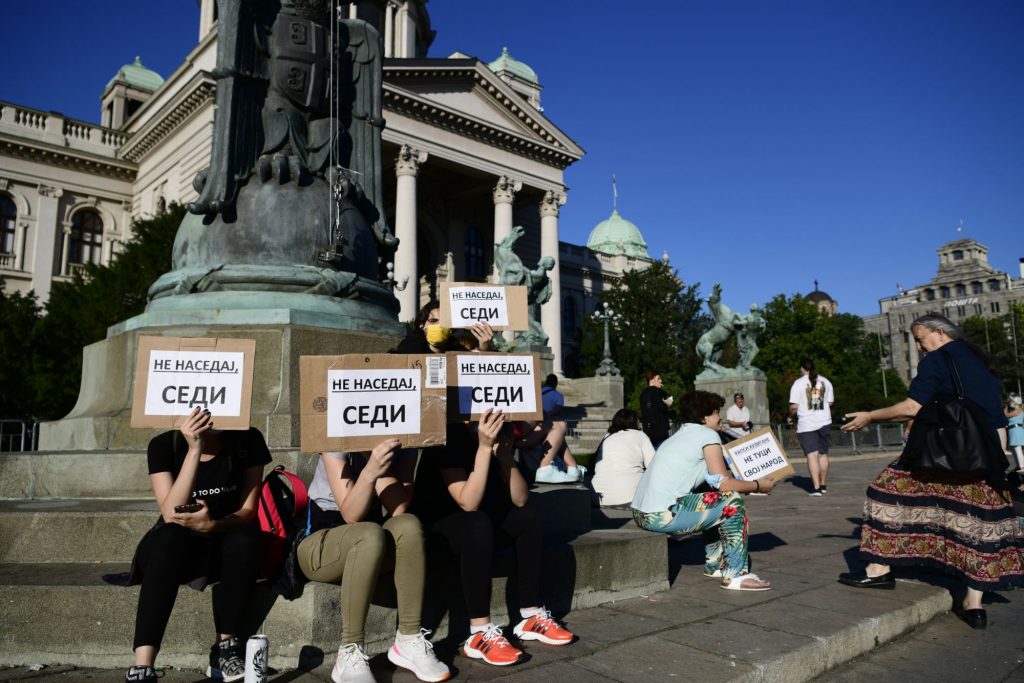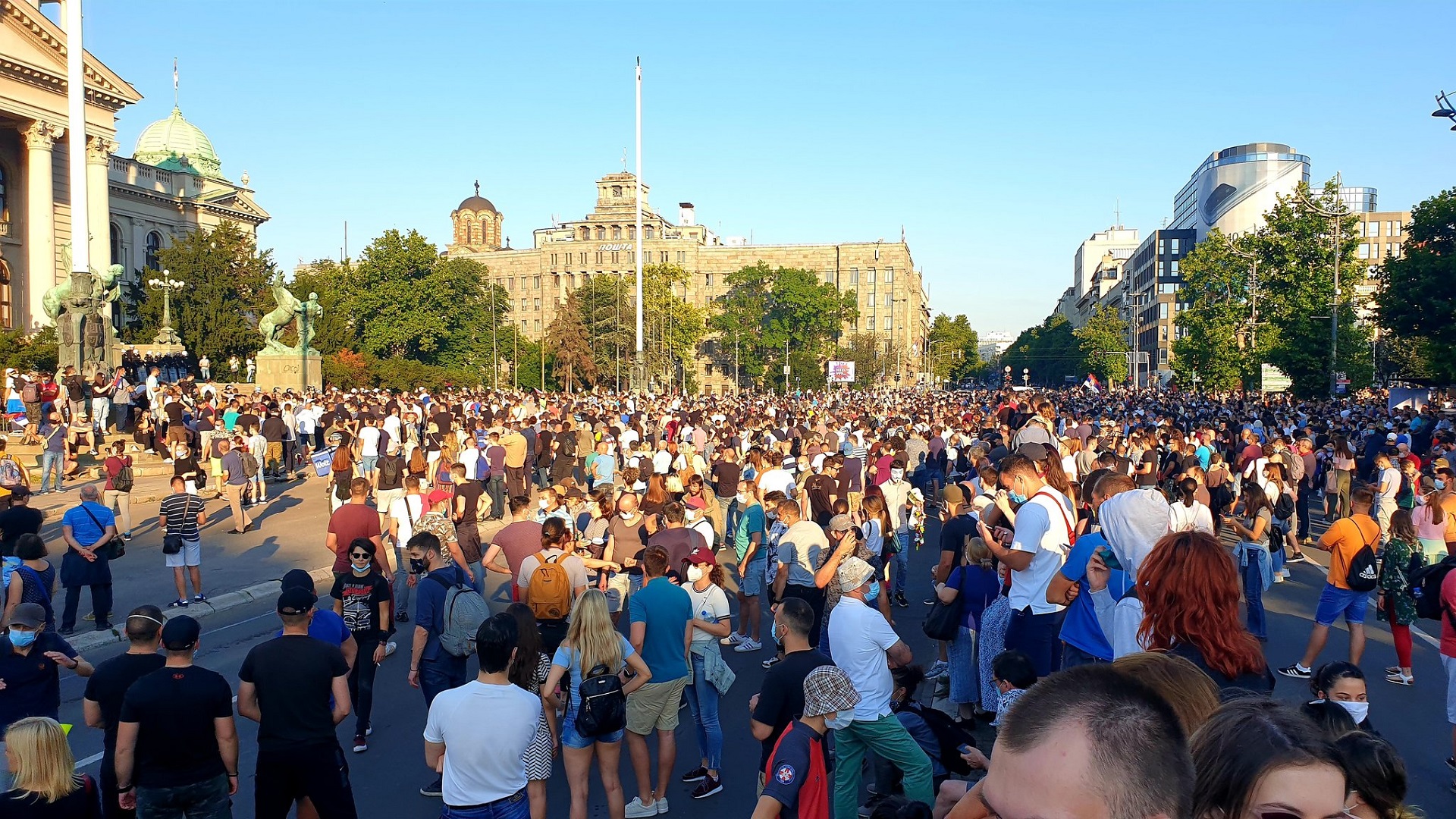To counter a second coronavirus wave, President Aleksandar Vucic announced a new lockdown. Protesters reacted with fury at his inconsistency, amid wider anger over his strongman leadership.
Thousands of Serbs demonstrated for a second consecutive night on Wednesday in response to President Aleksandar Vucic’s management of the coronavirus crisis and wider concerns over the state of democracy in Serbia.
The protests were the first major pandemic-related unrest in Europe since the start of the crisis, and were met by a violent police response that some analysts said they had not witnessed in Serbia since the rule of Slobodan Milosevic, who governed Serbia during the 1990s.
Serbs first took to the streets on Tuesday, soon after Mr. Vucic announced that Belgrade would be placed under a new three-day lockdown following a second wave of confirmed coronavirus infections.
But the demonstrations quickly morphed into a wider expression of frustration at Mr. Vucic’s increasing control over policymaking and perceived mismanagement of Serbia’s pandemic response. The protests continued on Wednesday, even after Mr. Vucic suspended his decision to enforce a second shutdown.
Protesters said they were less angry about the re-implementation of the lockdown than the governmental missteps that had created the need for renewed restrictions in the first place. These included decisions to proceed with a general election last week and to restart large public sports events.

“We don’t mind staying home for another three days — that wasn’t the problem,” said Dragana Grncarski, 45, a fashion events manager who protested on both days.
“However, they’re playing with our minds and with the truth,” Ms. Grncarski added. “When it suits them to do elections, there is no corona. They organized football matches and tennis matches, and because of that we have a situation where the hospitals are full.”
After initially enforcing one of Europe’s strictest lockdowns in March, Mr. Vucic lifted social restrictions in early May, claiming his government had defeated the coronavirus.

Law enforcement officials were later filmed beating unarmed protesters with batons, in scenes that some analysts said mirrored police behavior during the rule of Mr. Milosevic, who led Serbia through the Balkan Wars and was later tried for war crimes in The Hague.
“The excessive use of force — we haven’t seen that since Milosevic in 1996 or 1997,” Dr. Vasiljevic said.
Mr. Vucic said police were right to respond with force.
“There were indications of foreign involvement, and some criminal faces were there, too,” Mr. Vucic said, speaking on Wednesday afternoon, before the second night of protests.
“The aim was to damage Serbia’s international image,” he added.
The protests could soon fizzle because of their leaderless nature, the lack of a clear goal and the strength of Mr. Vucic’s grip on Serbia, Dr. Vasiljevic said.
Similar mass demonstrations dissipated last year without forcing concessions from Mr. Vucic.
“This situation is a bit different,” said Dr. Vasiljevic. “But we still need to have some clear political articulations, and a clear political narrative.”
NYTimes/Balakantimes.press
Napomena o autorskim pravima: Dozvoljeno preuzimanje sadržaja isključivo uz navođenje linka prema stranici našeg portala sa koje je sadržaj preuzet. Stavovi izraženi u ovom tekstu autorovi su i ne odražavaju nužno uredničku politiku The Balkantimes Press.
Copyright Notice: It is allowed to download the content only by providing a link to the page of our portal from which the content was downloaded. The views expressed in this text are those of the authors and do not necessarily reflect the editorial policies of The Balkantimes Press.

